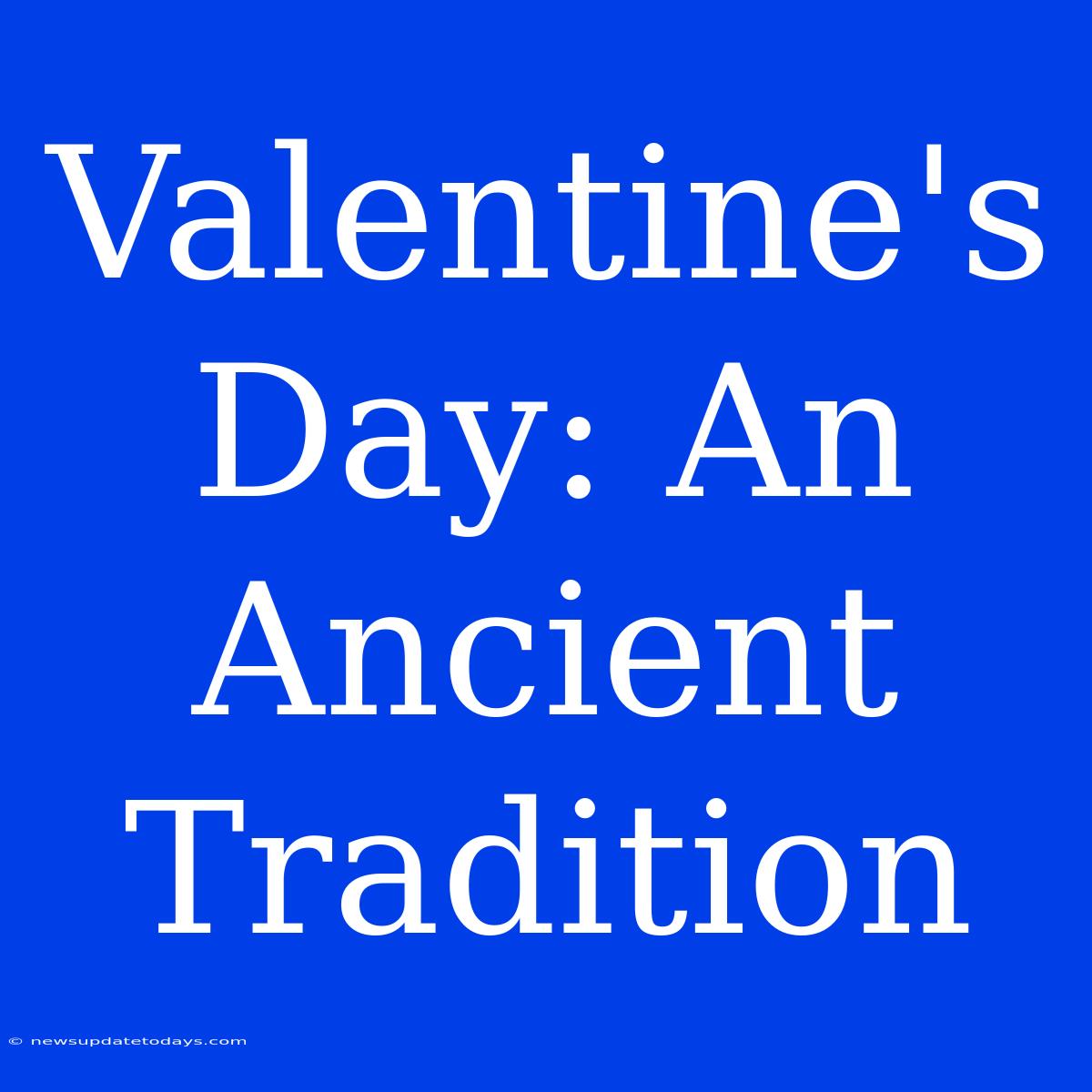Valentine's Day: Unearthing the Roots of an Ancient Tradition
Valentine's Day. The day of hearts, flowers, and chocolates. But have you ever wondered about the origins of this beloved holiday? Beyond the commercialism, lies a fascinating history rooted in ancient traditions and mythology, far removed from the candy hearts and romantic dinners we associate with it today. This article delves into the surprising depths of Valentine's Day's past, revealing its intriguing evolution.
Beyond the Hallmark Card: Exploring the Ancient Roots
The precise origins of Valentine's Day remain shrouded in mystery, lost in the mists of time. Several theories intertwine, weaving a complex tapestry of history and legend. One popular belief connects it to the ancient Roman festival of Lupercalia, celebrated in mid-February. This boisterous pagan festival involved fertility rites, animal sacrifice, and a unique element of matchmaking: young men would draw the names of women from a jar, pairing off for the duration of the festival, sometimes leading to marriage.
While the connection isn't definitive, the timing of Lupercalia and Valentine's Day suggests a possible link, hinting at the enduring human desire to celebrate love and pairing during the colder months.
Another prominent theory centers around Saint Valentine, a name associated with several early Christian martyrs. However, historical records are scarce, making it difficult to pinpoint a single Saint Valentine responsible for the holiday. The most common narrative involves a priest who defied Emperor Claudius II's ban on marriages for young men, secretly performing weddings for couples. This act of defiance, often romanticized, solidified the association of Valentine's Day with love and romance.
The Evolution of Romantic Traditions
The transition from pagan festivals to the Christian saint and ultimately to the modern Valentine's Day was a gradual process spanning centuries. The association of Saint Valentine with romantic love emerged over time, influenced by literary works and societal shifts.
Geoffrey Chaucer's Parliament of Foules, written in the 14th century, is often cited as a significant influence. Its portrayal of birds choosing their mates in mid-February helped solidify the association of Valentine's Day with romantic courtship.
The exchange of love letters and tokens, a central aspect of modern Valentine's Day celebrations, also developed gradually. The earliest known Valentine's Day cards date back to the 15th century, evolving from simple handwritten notes to the elaborate, commercially produced cards of today.
Valentine's Day: A Modern Phenomenon
The commercialization of Valentine's Day is a relatively recent phenomenon, experiencing a dramatic surge in the 19th and 20th centuries. Mass production of greeting cards and candies transformed the holiday into a significant commercial event. While some criticize the focus on consumerism, Valentine's Day remains a powerful symbol of love, affection, and appreciation, a testament to the enduring human need to celebrate relationships.
Conclusion: A Legacy of Love
Valentine's Day, despite its commercialized face, has a rich and complex history, spanning ancient pagan festivals, Christian martyrdom, and literary influence. It's a holiday that has evolved and adapted over centuries, ultimately becoming a powerful symbol of love, friendship, and affection. Its enduring legacy reminds us of the timeless human need to celebrate relationships and express our feelings for those we cherish. So, as you celebrate this year, remember the fascinating journey that led to this day – a journey rich in history and deeply connected to the very human desire to celebrate love.

